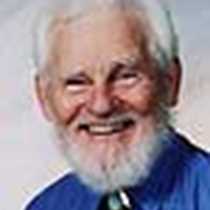Kamiah, Idaho
A wooden bowl and spoon, an elk-antler scraper, a fire-starting bow, a pine-needle basket. All of these items represent artifacts that Lewis and Clark might have seen during their visits with the Nez Perce people during the fall of 1805 and the spring of 1806. Guests who chose to explore the Lewis and Clark Clearwater River campsites saw these modern replicas of tools and utensils from a neolithic culture. Lin Laughy provided a detailed description of the Corps of Discovery’s route through Nez Perce Country as sumac red and dogbane yellow added color to the Clearwater landscape and the river provided the sound effects.
Those who selected the jetboat excursion through Hells Canyon might have seen the same kinds of artifacts had they dug deeper into the prehistory of the Snake River shores, but they were there for the scenery, the thrill of whitewater, and the more modern history of the Idaho-Oregon border country. They scratched the surface of the neolithic world, however, in the prehistoric pictographs they saw on the canyon walls.
“What time is it?” “It depends on what side of the river you’re on.” While they may have gotten confused by the stateline time zone difference, they returned to the Sea Bird in time to visit the Nez Perce National Historic Park. The jetboaters saw a greater variety of wildlife – bighorn sheep, red-tailed hawk, rainbow trout – but those who traveled up the Clearwater momentarily lived closer to the spirit of Lewis and Clark. However, both groups did visit the Nez Perce National Historic Park, which honors the tribe that helped expedition members survive and succeed.
A wooden bowl and spoon, an elk-antler scraper, a fire-starting bow, a pine-needle basket. All of these items represent artifacts that Lewis and Clark might have seen during their visits with the Nez Perce people during the fall of 1805 and the spring of 1806. Guests who chose to explore the Lewis and Clark Clearwater River campsites saw these modern replicas of tools and utensils from a neolithic culture. Lin Laughy provided a detailed description of the Corps of Discovery’s route through Nez Perce Country as sumac red and dogbane yellow added color to the Clearwater landscape and the river provided the sound effects.
Those who selected the jetboat excursion through Hells Canyon might have seen the same kinds of artifacts had they dug deeper into the prehistory of the Snake River shores, but they were there for the scenery, the thrill of whitewater, and the more modern history of the Idaho-Oregon border country. They scratched the surface of the neolithic world, however, in the prehistoric pictographs they saw on the canyon walls.
“What time is it?” “It depends on what side of the river you’re on.” While they may have gotten confused by the stateline time zone difference, they returned to the Sea Bird in time to visit the Nez Perce National Historic Park. The jetboaters saw a greater variety of wildlife – bighorn sheep, red-tailed hawk, rainbow trout – but those who traveled up the Clearwater momentarily lived closer to the spirit of Lewis and Clark. However, both groups did visit the Nez Perce National Historic Park, which honors the tribe that helped expedition members survive and succeed.




